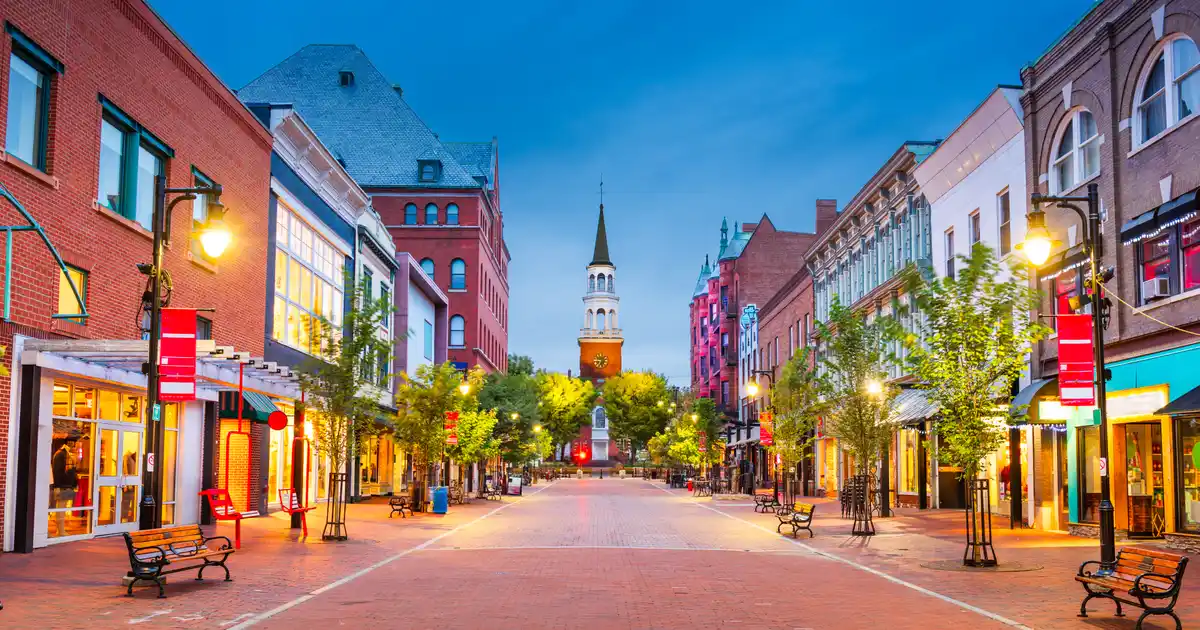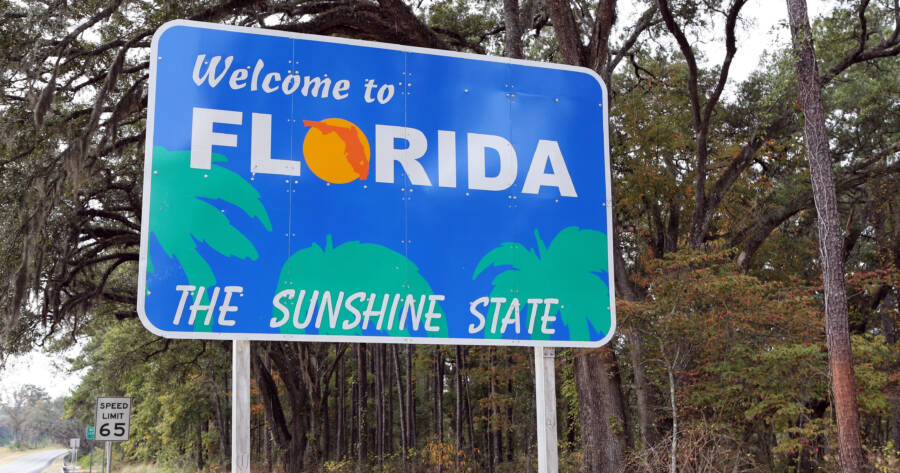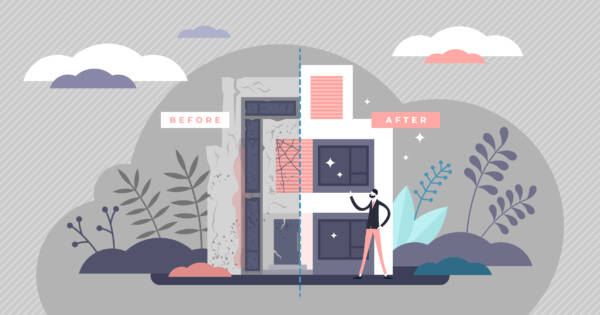- High costs of living and difficulty finding a job are the primary reasons people leave one state for another
- Lower living costs, ease of finding work, warmer climates and retirement are common reasons people move to other states
- The ability to work remotely is also likely driving people to less populated states
Every year, around 40 million Americans move from one state to another. While some of these moves are local, a surprising number are out-of-state. Moves from one state to another may be for job-related reasons or to be closer to family. Better climate or culture and different lifestyle options are also among the most common reasons.
If you’re debating a big move, you’re far from alone. Keep reading to learn about the states Americans are leaving, where they’re heading and the potential reasons why.
Leaving: New Jersey
New Jersey has held the top spot for states people have been leaving for four years now. According to the most recent statistics, 71% of out-of-state moves are among New Jersey residents. High costs of living could be a significant factor, as New Jersey ranks higher than the American average in almost every cost of living category, except for healthcare. It ranks the highest in housing.
If you’re hoping to find affordable housing in New Jersey, you’ll likely to be disappointed. It’s one of the main reasons people are moving out of the Garden State.
 Shutterstock
ShutterstockLeaving: New York
New York residents are packing it out in higher numbers than they’re moving in, causing a slowly dwindling population. As with New Jersey, the high living costs are likely a primary reason former residents have chosen to flee this northern state.
New York’s cost of living scores well above the national average across the board, including housing. However, living costs are more affordable in upstate New York than in the city. For some, the desire to live in more rural settings has driven them out of the city.
 Shutterstock
ShutterstockLeaving: Connecticut
Most people leaving Connecticut seem to be older and report moving south or west for retirement. However, a small but notable number moved to different states for job opportunities, since Connecticut is one of the most challenging states to find a job in. While the national unemployment average is only 3.8%, Connecticut’s unemployment rate is twice as high at 6.2%.
Higher unemployment rates have remained a fairly consistent trend for this New England state since 2011. While remote working has the potential to help with the unemployment issue, not much headway has been made.
 Shutterstock
ShutterstockLeaving: California
California may be warm and sunny, but residents are still fleeing in droves. Both high living costs and difficulty finding a job are driving residents to leave.
The cost of living in California is higher than the national average, and housing costs are more than double the national average, making it challenging for the average resident to afford a home. Combine this with an unemployment rate of a little less than double the national average, and it’s no surprise that people are fleeing the golden state.
 Shutterstock
ShutterstockLeaving: Illinois
People report moving out of Illinois for several reasons. Better housing and employment opportunities top the list, with some stating poor public policy as the most significant problem. Around half of all Illinois residents who have remained in the state have at least thought about moving, citing high taxes as the primary reason.
Illinois has a state and local tax rate of 15%, which is the highest in the nation. Although living costs are fairly affordable, these tax rates are affecting the financial security of Illinois’ residents.
 Shutterstock
ShutterstockLeaving: Michigan
The cold weather, significant snowfall and high crime rates in large cities, such as Detroit, are the primary reasons people leave Michigan. This is especially true for older residents looking to retire. However, younger people are also moving out of state due to unemployment rates of more than 4%.
Michigan’s unemployment rates have been higher than the national average since 2012. Fortunately, unemployment is moving toward another steady decline after rising to record rates in recent years.
 Shutterstock
ShutterstockHeading: Vermont
Vermont is one of the least populated states in America, with only Wyoming boasting a smaller population. You may find it surprising that many of the states that people are fleeing to are among the least populated. This drive to live in more rural areas could be spurred on by lower living costs and the ability to work anywhere with a reliable internet connection.
Other reasons people are heading to Vermont include the outdoor opportunities, peaceful environment and friendly, welcoming community.
 Shutterstock
ShutterstockHeading: South Dakota
South Dakota ranks as the sixth overall happiest state, with the fourth-happiest community and environment. The state also boasts the sixth-smallest population in the nation, which coincides with an ongoing trend of moving to less densely populated areas.
South Dakota offers plenty of opportunities to get outside in nature and enjoy a peaceful environment. The locals are friendly, and the cost of living is significantly lower than the national average, including housing costs, which are around 20% cheaper.
 Shutterstock
ShutterstockHeading: South Carolina
South Carolina has numerous opportunities for potential incoming residents. If you’re seeking lots of green space, job opportunities and low living costs, South Carolina may be exactly what you’re looking for. Living costs fall below the national average, with housing alone being about 30% cheaper.
The climate is humid subtropical, with hot summers and mild winters. However, the mountainous regions experience moderately cold winters. The warm weather and affordable living are big draws for retirees and growing families alike.
 Shutterstock
ShutterstockHeading: West Virginia
West Virginia’s slogan is “Wild and Wonderful”, which is an accurate description of the state. The state boasts friendly people, expansive wilderness and unique culture. Some people are moving back to West Virginia to be with family after moving away for work, most likely due to the widespread ability to work remotely.
The cost of living is significantly lower than the national average, including housing, which scores 41.7 compared to the national average of 100. So finding affordable housing is much more likely in West Virginia than in many other parts of the country.
 Shutterstock
ShutterstockHeading: Florida
People have been moving to Florida for years, and the trend hasn’t reversed. Florida offers year-round sunshine, beautiful beaches and plenty of activities. The state’s thriving retirement communities draw many retirees. With January temperatures averaging almost 60 degrees, there’s plenty of time to enjoy the state’s outdoor offerings.
Although Florida’s larger cities have high housing prices, much of the state offers moderate affordability. If low housing costs are essential, you might consider moving to a small Florida town, instead of a larger city.
 Shutterstock
ShutterstockHeading: Alabama
People are moving Alabama for several reasons. The state offers job opportunities galore, with total unemployment rates below the national average. Living costs are also moderately lower than the national average, which pairs well with easy employment.
In most of the state, the weather is warm throughout the year, with mild winters (though the northern portion may see harsher winters). The state also offers that legendary southern charm many are drawn to.
 Shutterstock
Shutterstock







